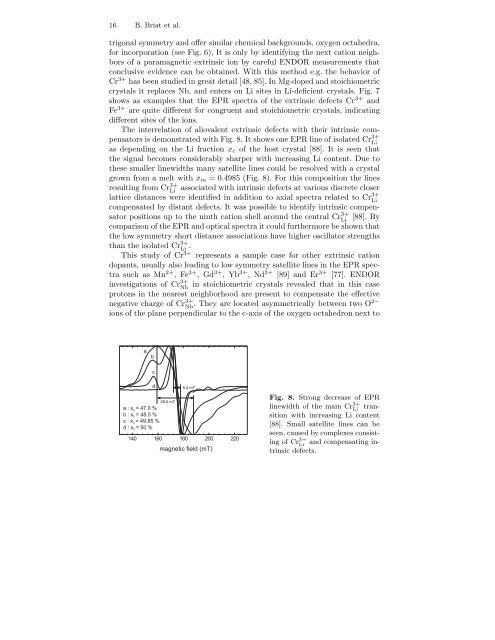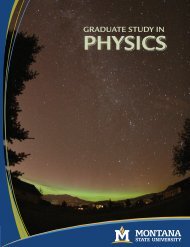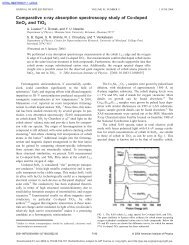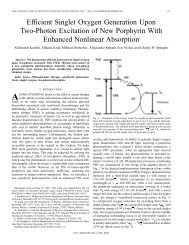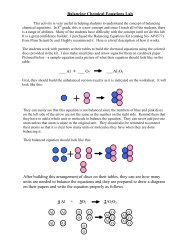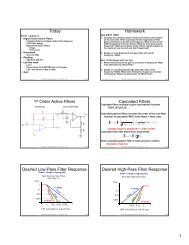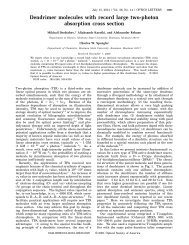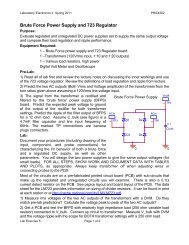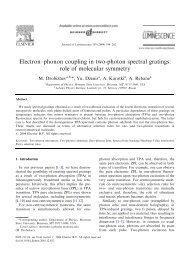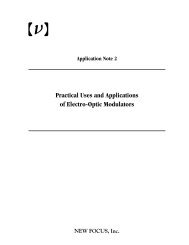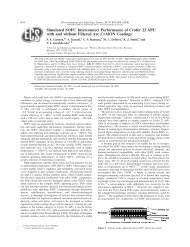Defects in inorganic photorefractive materials and their investigations
Defects in inorganic photorefractive materials and their investigations
Defects in inorganic photorefractive materials and their investigations
Create successful ePaper yourself
Turn your PDF publications into a flip-book with our unique Google optimized e-Paper software.
16 B. Briat et al.<br />
trigonal symmetry <strong>and</strong> offer similar chemical backgrounds, oxygen octahedra,<br />
for <strong>in</strong>corporation (see Fig. 6). It is only by identify<strong>in</strong>g the next cation neighbors<br />
of a paramagnetic extr<strong>in</strong>sic ion by careful ENDOR measurements that<br />
conclusive evidence can be obta<strong>in</strong>ed. With this method e.g. the behavior of<br />
Cr 3+ has been studied <strong>in</strong> great detail [48, 85]. In Mg-doped <strong>and</strong> stoichiometric<br />
crystals it replaces Nb, <strong>and</strong> enters on Li sites <strong>in</strong> Li-deficient crystals. Fig. 7<br />
shows as examples that the EPR spectra of the extr<strong>in</strong>sic defects Cr 3+ <strong>and</strong><br />
Fe 3+ are quite different for congruent <strong>and</strong> stoichiometric crystals, <strong>in</strong>dicat<strong>in</strong>g<br />
different sites of the ions.<br />
The <strong>in</strong>terrelation of aliovalent extr<strong>in</strong>sic defects with <strong>their</strong> <strong>in</strong>tr<strong>in</strong>sic compensators<br />
is demonstrated with Fig. 8. It shows one EPR l<strong>in</strong>e of isolated Cr 3+<br />
Li<br />
as depend<strong>in</strong>g on the Li fraction x c of the host crystal [88]. It is seen that<br />
the signal becomes considerably sharper with <strong>in</strong>creas<strong>in</strong>g Li content. Due to<br />
these smaller l<strong>in</strong>ewidths many satellite l<strong>in</strong>es could be resolved with a crystal<br />
grown from a melt with x m =0.4985 (Fig. 8). For this composition the l<strong>in</strong>es<br />
result<strong>in</strong>g from Cr 3+<br />
Li<br />
associated with <strong>in</strong>tr<strong>in</strong>sic defects at various discrete closer<br />
lattice distances were identified <strong>in</strong> addition to axial spectra related to Cr 3+<br />
Li<br />
compensated by distant defects. It was possible to identify <strong>in</strong>tr<strong>in</strong>sic compensator<br />
positions up to the n<strong>in</strong>th cation shell around the central Cr 3+<br />
Li<br />
[88]. By<br />
comparison of the EPR <strong>and</strong> optical spectra it could furthermore be shown that<br />
the low symmetry short distance associations have higher oscillator strengths<br />
than the isolated Cr 3+<br />
Li .<br />
This study of Cr 3+<br />
represents a sample case for other extr<strong>in</strong>sic cation<br />
dopants, usually also lead<strong>in</strong>g to low symmetry satellite l<strong>in</strong>es <strong>in</strong> the EPR spectra<br />
such as Mn 2+ ,Fe 3+ ,Gd 3+ ,Yb 3+ ,Nd 3+ [89] <strong>and</strong> Er 3+ [77]. ENDOR<br />
<strong>in</strong>vestigations of Cr 3+<br />
Nb<br />
<strong>in</strong> stoichiometric crystals revealed that <strong>in</strong> this case<br />
protons <strong>in</strong> the nearest neighborhood are present to compensate the effective<br />
negative charge of Cr 3+<br />
Nb<br />
. They are located asymmetrically between two O2−<br />
ions of the plane perpendicular to the c-axis of the oxygen octahedron next to<br />
Fig. 8. Strong decrease of EPR<br />
l<strong>in</strong>ewidth of the ma<strong>in</strong> Cr 3+<br />
Li<br />
transition<br />
with <strong>in</strong>creas<strong>in</strong>g Li content<br />
[88]. Small satellite l<strong>in</strong>es can be<br />
seen, caused by complexes consist<strong>in</strong>g<br />
of Cr 3+<br />
Li<br />
<strong>and</strong> compensat<strong>in</strong>g <strong>in</strong>tr<strong>in</strong>sic<br />
defects.


